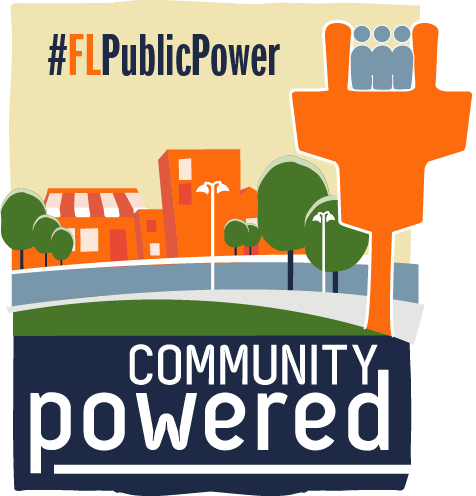Underground Power Lines Dispute Continues
By Jim Sunders - News Service of Florida
 An administrative law judge will hold a hearing this month in a dispute about how to carry out a new law that is expected to lead to more underground power lines in Florida --- and higher costs for utility customers.
An administrative law judge will hold a hearing this month in a dispute about how to carry out a new law that is expected to lead to more underground power lines in Florida --- and higher costs for utility customers.
The state Office of Public Counsel, which represents customers, is challenging a Nov. 5 decision by regulators to approve proposed rules stemming from the law, which the Legislature passed this spring.
The public counsel does not challenge the underlying law but contends that the rules, approved by the Florida Public Service Commission, are flawed. For example, the challenge contends that the rules would improperly allow utilities to collect projected costs for adding underground power lines and doing other work to make electric systems better able to withstand storms.
“(The) law permits only the recovery of ‘incurred’ costs --- historical, approved expenditures --- following a proceeding where prudent costs are determined,” the challenge said. “(The law) does not contain any authority that would allow the (utilities) to recover projected costs that have not been incurred.”
The Public Service Commission last week filed a document denying the allegations and arguing that the public counsel does not have legal standing to pursue the challenge.
Also last week, Administrative Law Judge James H. Peterson III scheduled a Dec. 20 hearing in the case.
The dispute has been closely watched in the utility industry, as the law is expected to help lead to billions of dollars in projects in the coming years. Florida Power & Light, Duke Energy Florida and Tampa Electric Co. have all moved to intervene in the case, as has the Florida Industrial Power Users Group, which represents large industrial utility customers.
The law, which received overwhelming support in the Legislature, came after storms such as Hurricane Irma and Hurricane Michael knocked out power for millions of Floridians. It also came after years of calls by consumers to put more power lines underground to help prevent wind-related outages.
A key part of the law changes the way such storm-protection projects are financed --- and likely will lead to increased costs for consumers.
Under the law, utilities will be able each year to seek approval from the Public Service Commission to collect money from customers for storm-protection projects. In the past, such projects have generally been financed through base electric rates, which are set for a number of years and include a wide range of utility expenses.
Utilities will have to file 10-year plans with the commission about bolstering storm protection. But a major part of the dispute has centered on information utilities should have to provide about projects during the first three years.
In approving the proposed rules, the Public Service Commission agreed with utilities that they should only have to provide detailed information for projects in the first year. Information submitted initially for projects in the second and third years would be broader, such as estimated numbers of projects and estimated costs. The utilities would then come back annually with detailed plans for the next year.
The Office of Public Counsel and other critics have contended that a lack of detail about projects in the second and third years could allow utilities to collect money under the new law for projects whose costs also are being passed on to customers through base rates --- described as “double recovery.”
“Without the project-level detail required by the enabling statute, the proposed rule does not enable the commission to conduct the review required (by law),” the challenge filed at the Division of Administrative Hearings said.
But Public Service Commission members and utilities have said the companies will have to prove every year that the costs of the projects under the new law also aren’t being recouped through base rates. Also, they have expressed concerns about providing detailed lists of projects for the second and third years and then having to make changes.
Meanwhile, allowing utilities to collect projected costs for the storm-protection projects would be similar to the way certain other utility costs are handled. In such situations, utilities go before the Public Service Commission after projects are completed to “true up” costs --- a process that accounts for collecting too much, or not enough, money.
Article reposted with permission from The News Service of Florida.
 Enter your email address in the
Enter your email address in the 